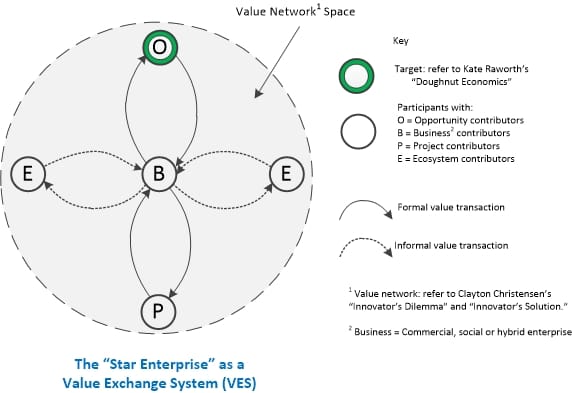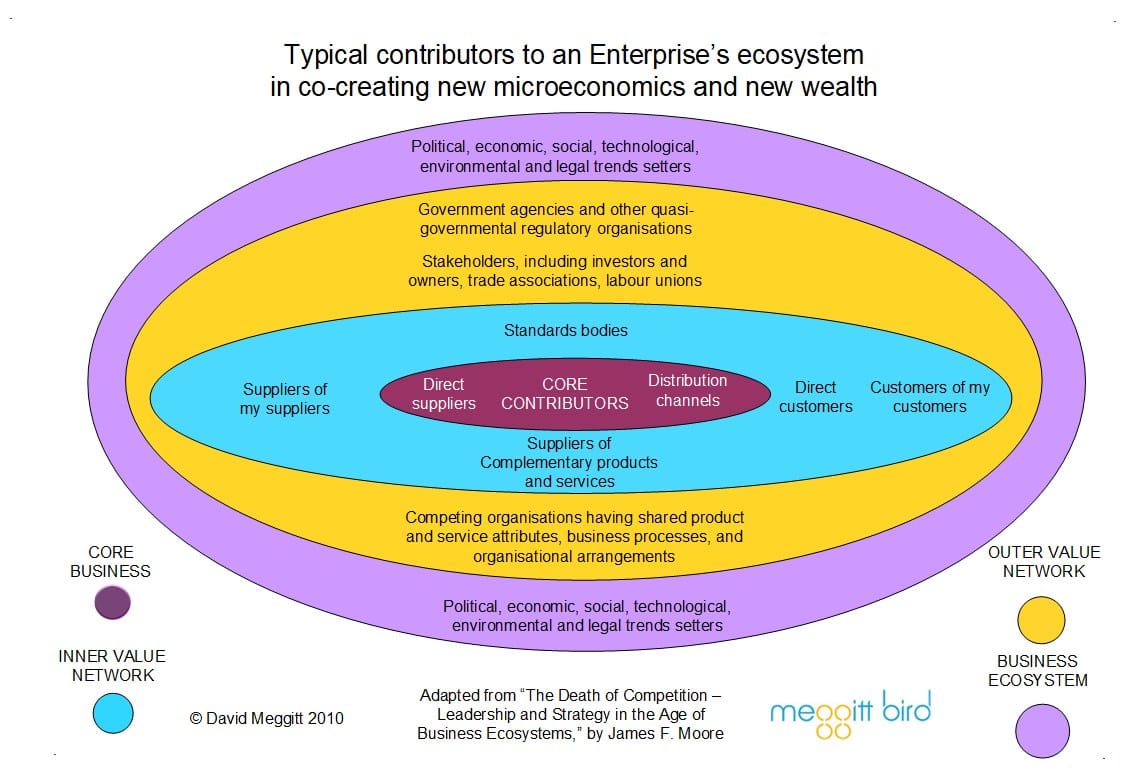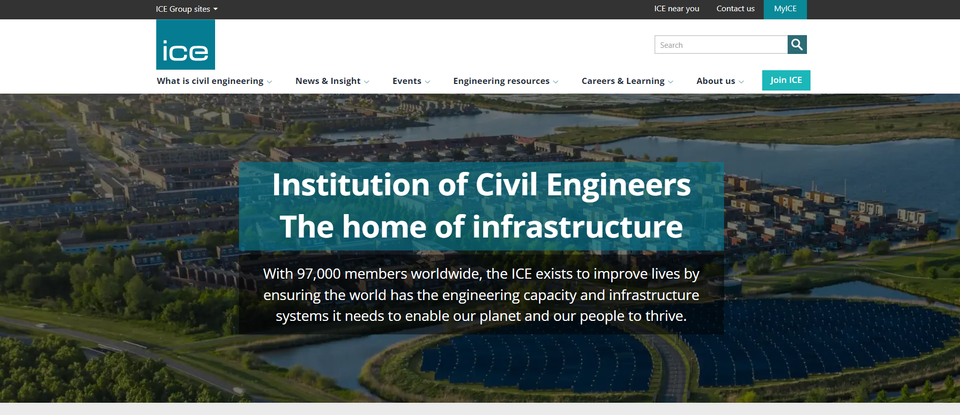The Star Enterprise (D3)

We define a star enterprise as one that focuses its future product and service offerings on the opportunities presented by the Doughnut Economy [1]. It examines the trends and events shaping the world regardless of whether the enterprise is commercial, social or a hybrid combination of the two, and opts to take appropriate initiatives.
Of course, such initiatives cannot be done in isolation. At an enterprise level, there are associated suppliers, customers, customers’ customers, channels, standards bodies, government agencies and many other participants where formal or informal collaboration (as value transactions) is needed to expedite innovation. The space within which this takes place is called a “value network” [2].
The Star Enterprise, that is, a star performer! is represented as a star.

The circles represent participants. These are contributing people acting alone or within a group, under their own job title, and acting in a role at any level of aggregation – from a single person to nation state.
At an enterprise level considered here, the central circle B represents the participants in your enterprise and O represents providers of opportunities which we like to consider are operating within the boundaries of the Doughnut Economy. P represents participants contributing within projects which, acting to a business case, initiate change to bring benefits to the business.
The above tend to be realised through formal arrangements. E represents participants within the wider business ecosystem.
Seeing the big picture
Engagement and collaboration leading to innovation is boosted by participants being able to see the bigger picture. Consequently, in order to diagnose a situation whilst in the midst of action it is necessary to gain distance from events taking place on the ground and being able to “see the wood for the trees.” As is succinctly expressed it is important to “stand on the balcony above the dance floor,” see the field of play from an elevated position and exercise Adaptive leadership [3]. To complement this, see research and insights from Dr. Charles Ehin here.
So, what kind of pictures or diagrams should be developed? What scope and detail should they contain? Based upon our research and practice over 20 years our conclusion on scope is that they should:
· ignore the superfluous and include all that is essential in a business, service or community
· focus on what the founder of the discipline of management called the load-bearing activities that produce results [4]
· look both internally to and externally from the core and extended business / inner value network to the business ecosystem and beyond [5] and
· envisage also the big picture which we call the opportunity environment or fitness landscape so that the more detailed pieces can be fitted together later (refer to figure following) and W3.

In short, the pictures and diagrams should be simple and memorable enough to capture the complexity of organizations and the situations in which they find themselves, but not too simple.
This is what VES does.
Refs:
[1] K. Raworth, Doughnut Economics - seven ways to think like a 21st-century economist, London, UK: Random House Business Books, 2017.
[2] C. M. Christensen and M. E. Raynor, The innovator's solution - creating and sustaining successful growth, Boston, USA: Harvard Business Review Press, 2003.[3] R. Heifetz, A. Grashow and M. Linsky, The Practice of Adaptive Leadership, Boston, USA: Harvard Business Press, 2009.
[4] P. Drucker, Innovation and Entrepreneurship, 1985.
[5] J. F. Moore, The Death of Competition - leadership & strategy in the age of business ecosystems, New York, USA: HarperCollins Publishers, 1996.



